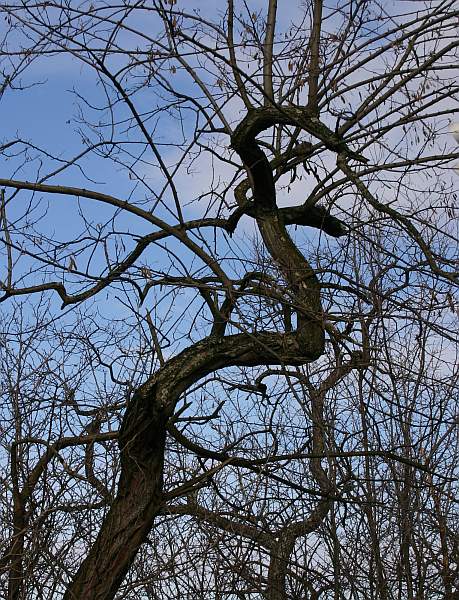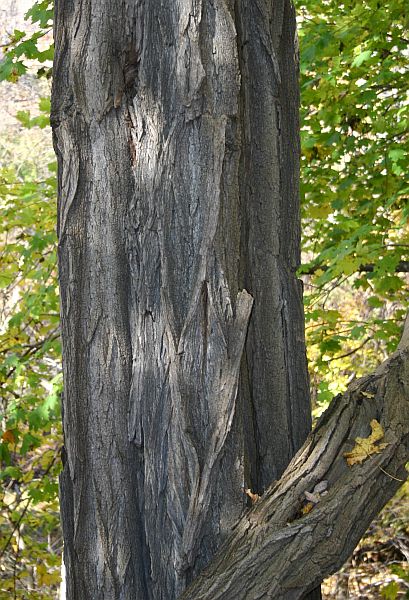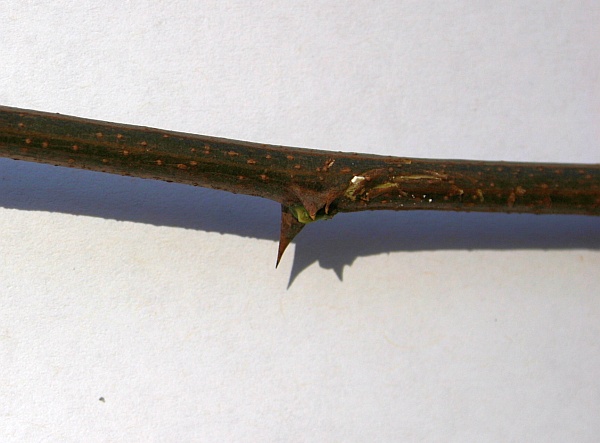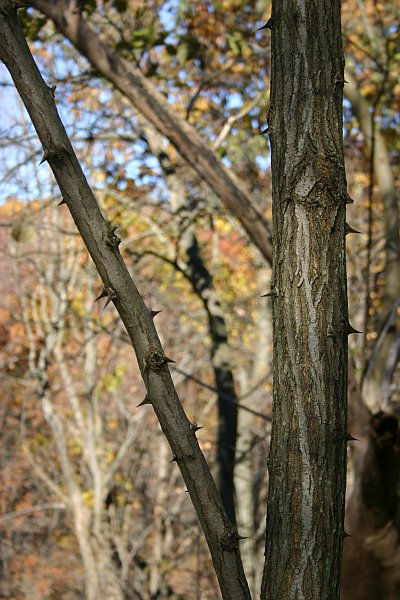
A friend of mine from Maryland once remarked that Pittsburgh has ugly trees. “The gnarled ones look like devil trees,” she said.
Though she didn’t know their name I think she was referring to black locusts whose winter profile can look spooky.
Black locusts (Robinia pseudoacacia) grow in twisted shapes if they’ve been broken, badly trimmed, or invaded by the locust borer that weakens and deforms the tree. The tree pictured above has been through at least two of these assaults.
The bark on mature black locusts is gray-brown and so deeply furrowed it looks distressed. Though a bit spooky it’s a good field mark for identifying the tree.

Up close you can see that each bud is surrounded by paired thorns, like devil’s horns.

The thorns also grow on the trunks of young trees.

Black locust flowers are such good honey-sources that they’ve been planted for this purpose in Europe, Asia and southern Africa. If you don’t live in the black locusts’ native range — the southern Appalachians from Pennsylvania to Georgia, and the Ozarks — you might think of them as devil trees where they’ve become invasive.
Black locusts thrive in old fields, disturbed woodlots and along roadsides because they tolerate pollution and poor soil. They make their own fertilizer through a process called nitrogen fixation. As members of the legume family, their roots have a symbiotic relationship with Rhizobium bacteria. The bacteria enters the root hairs and the plant makes tumor-like growths to surround it. This protects the bacteria which in turn takes in nitrogen and converts it to a form that fertilizes the plant.
With beautiful flowers and an ability to make fertilizer, they don’t deserve to be called devil trees.
(photos by Kate St. John)
And. . .
the blossoms in spring (when the conditions are just right) have a beautiful aroma like sweet grapes! But the bloom (in quantity and scent) varies greatly from year to year.
Even better. . . the blossoms are edible, and they’re delicious. You can eat them right off the tree, or you can make a batter and make Locust Blossom Fritters! They are yummy!
We used to call these ‘money trees’ when we were kids–used the leaves as ‘coins’ to play store, etc!
how beautifully you write Kate!
but the small white flowers smell good and sweet
I’ve always loved the shape of these trees